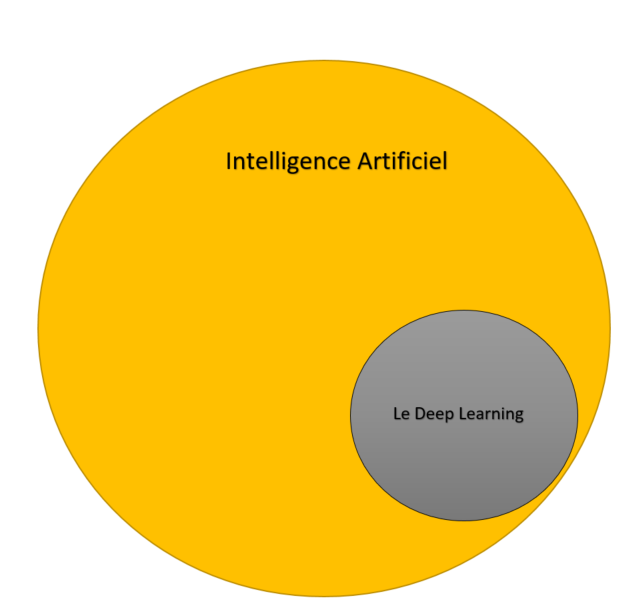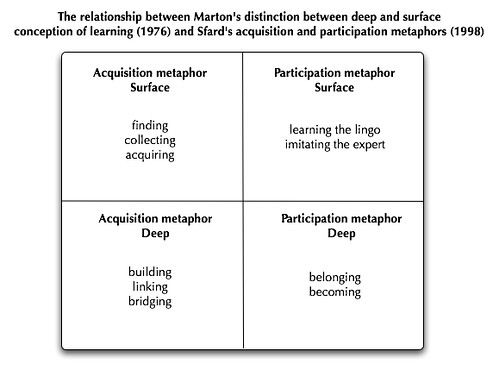Difference Between Deep Learning and Surface Learning
Research into student learning indicates that any learning process involves a specific depth of study and there are individual differences in terms of how students approach their learning. Learning is highly contextual and at the core of every learning process lie two fundamental concepts worth mentioning: deep learning and surface learning. Deep learning is a committed approach to learning where the learner uses higher-order cognitive skills to master academic content, work collaboratively and think and interact critically and actively with the content being learned. But not all learning is the same. Maybe for some reasons, students tend to avoid the hard work and instead rely on single sources of information, and as a result they learn only what is required but nothing more. This is referred to as surface learning. The surface approach is totally in contrast with the deep approach. So it’s important for the teachers to understand the different ways how the students learn and interpret. Different characterizations contrasting deep and surface learning exist.

What is Deep Learning?
Deep learning is a committed approach to learning that involves consideration rumination on the part of the student. There are several different ways to approach and engage students to allow them to think and learn critically and accomplish complex tasks at hand. The deep approach encourages students to interact vigorously and critically with the content in order to understand new ideas and integrate these ideas with what they learned and test them on reality. Deep approach often includes applying critical thinking skills to devise a solution to a posed problem. Deep learners seek to understand meaning and can apply what they learn to new situations and contexts. They enjoy learning new stuffs and subjects, and discussing different points of view. The deep learners construct their own knowledge by making connections between existing and new findings.

What is Surface Learning?
Surface learning, as the name suggests, is a rather passive approach to learning where the students tend to learn only what is required and nothing more. It is a superficial approach to learning which simply involves scraping the surface of the material being studied and concentrating only on the assessment requirements without getting into the details. The surface learners tend to work in isolation and see learning as coping with tasks, as opposed to deep learners who seek to understand meaning. The surface learners concentrate only on assessment requirements with the only intention of passing the exams or test. The surface approach is totally the opposite of the deep approach, with students showing only a little or no personal engagement with the subject matter. They are unable to understand the subject matter and distinguish guiding principles or patterns in learning.
Difference between Deep Learning and Surface Learning
Definition
– Deep learning, as the name implies, refers to a deep approach to learning which promotes understanding and implementing new ideas into real life situations. It is a committed approach to learning where learners seek to understand meaning and can apply what they learn to new situations and contexts. Surface learning, on the contrary, refers to a rather monotonous approach to learning new facts and ideas uncritically and relies on rote learning. It is essentially about reproducing knowledge or skills without much understanding.
Characteristics
– Deep learners are more focused and determined and they always look for meaning; interact vigorously and critically with the content; focus on the concepts needed to solve a complex task; seek to understand new ideas; relate ideas to previous knowledge and experience; and thoroughly examine the logic of the argument. Surface learners, on the other hand, rely on rote learning and learn only what is required and nothing more; concentrate only on assessment requirement; study what is needed for the exams and no more; receive information passively; and fail to distinguish guiding principles or patterns.
Goal
– Deep learners seek to construct their own knowledge by making connections between existing and new knowledge and they are intrinsically motivated and very curious about the subject, as opposed to surface learners who are not interested in the subject and who see learning tasks as forced work. The surface approach is totally opposite of the deep approach, with students focusing on reproducing only those parts of the content required to complete assessments with little or no personal interest in the subject matter. Deep learners learn to use higher-order cognitive skills to master academic content.
Deep Learning vs. Surface Learning: Comparison Chart

Summary of Deep Learning vs. Surface Learning
In a nutshell, the surface approach to learning is essentially the opposite of the deep learning approach, with students focusing on reproducing only those parts of the content required to complete assessments without worrying about the logic of the argument and with little interest in the subject matter. Deep learning is a rather committed approach to learning where students work collaboratively and think and interact critically and actively with the content being learned. Deep learners are intrinsically motivated and determined to use higher-order cognitive skills to master academic content.
- Difference Between Caucus and Primary - June 18, 2024
- Difference Between PPO and POS - May 30, 2024
- Difference Between RFID and NFC - May 28, 2024
Search DifferenceBetween.net :
Leave a Response
References :
[0]Maier, Pat. Using Technology in Teaching & Learning. London, United Kingdom: Kogan Page, 1996. Print
[1]Seel, Norbert M. Encyclopedia of the Sciences of Learning. Berlin, Germany: Springer, 2011. Print
[2]Entwistle, Noel. Student Learning and Academic Understanding: A Research Perspective with Implications for Teaching. Cambridge, Massachusetts: Academic Press, 2018. Print
[3]Hermida, Julian. Facilitating Deep Learning: Pathways to Success for University and College Teachers. Boca Raton, Florida: CRC Press, 2014. Print
[4]Image credit: https://commons.wikimedia.org/wiki/File:Deep_learning_fait_parti_de_l%27IA.png
[5]Image credit: https://live.staticflickr.com/3339/3515209714_7c937c44d8.jpg
